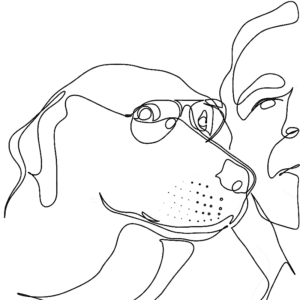Fr. Benedict J. Groeschel, CFR
Our Lady went into a strange country / And they crowned her for a queen, / For she needed never to be stayed or questioned / But only seen; /And they were broken down under unbearable beauty / As we have been.
~G. K. Chesterton poem, Going after The Lost Sheep
If you have ever visited the Basilica of Our Lady of Guadalupe in the northeastern part of Mexico City you will immediately know why the people of that land have been “broken down under unbearable beauty” as the poem says. They are a people in love with the Virgin, and rightly so, because she chose them for God’s special favor. The Virgin Mary, under the title of Our Lady of Guadalupe, appeared in Mexico in five apparitions in December of 1531, just after the people of Mexico were liberated from the tyranny of a pagan government and a satanic religion of human sacrifice. She won them over with love, not force, and captured their hearts, imprinting upon them the love of Christ her Son in a way that has rarely been seen in the history of the world.
“Imprinting” is perhaps the best word to describe Mary’s effect on the people of that land because she left behind an “impression” of herself on a poor Indian’s cloak. The cloak is called a tilma, and you can see the original Tilma with the picture of Mary hanging in the basilica even to this day, as pristine pure and beautiful as the day it was given more than 475 years ago. Have you ever had an experience that struck you so profoundly that you say something like, “This will remain engraved upon my memory forever!” Well, that indeed was the effect of the apparitions of Mary on the Mexican people who remain resolutely Catholic and perhaps even more resolutely lovers of the Virgin Mary since that time. No one knows how the image got on the cloak or remains there except to just admit that it was a miracle of grace! It is not painted or dyed or brushed on the cloak in any way. Only God could have “imprinted” this image in the rough fibers of the cloak, and because it is a work of grace, the Tilma communicates a vitality that continues to change hearts and souls as only Mary can.
It is impossible to describe to you all the miraculous aspects of the Tilma in the short space I have here, but suffice it to say that when you look at that image you see beauty itself. The Tilma breathes the very aroma of a Mother’s love to the people who see it, and as surely as we know our own mothers, the people of that land, rich and poor, recognized a heavenly visitation of the Mother of Christ when they saw her image in their midst. It is evident in their faces and their bearing. They come to the Basilica of Guadalupe with every manner of prayer and petition to bring to God through Our Lady. In the apparition, she said that was her purpose for coming: “I want very much to have a little house built here for me, in which I … will give [my Son] to the people in all my personal love, in my compassion, in my help, in my protection….Here I will hear their weeping, their complaints and heal all their sorrows, hardships and sufferings.”
Of all the sights I have seen at the Basilica, I believe the most touching to see is the young Mexican mothers, many of them indigenous Indians, bringing their newborn children to Mary and holding them up in front of the Tilma to “consecrate” them in a very humble but real way to their Mother who knows all the joys and sorrows of motherhood. You can also see the Mexicans literally walking on their knees from the large plaza into the Basilica in fulfillment of oaths that they made to the Virgin in return for some favor. Words cannot describe how inspiring such a scene is to a Catholic from the US. The sheer simplicity and strength of the faith in those souls reminds us that the Church is not a bureaucracy but rather a pilgrimage, and Our Lady walks with us through “this valley of tears.”
Have you let Mary “imprint” her love upon your soul? Do you have a desperate need to bring to her? Would you approach her symbolically at least on your knees asking her help in some vital matter of life? She is waiting, in all her “unbearable beauty,” to appear to you in some concrete way that will help you and make of you a true disciple, just like she made a whole nation come to Christ when they were in the grip of evil and desperation all around them.
Prayer
Blessed Mary, wonderful Evangelizer of the Americas and lover of souls, open our hearts and minds to the love of Christ that comes to us through your merciful intercession and lead us from the sins of this world to the promises of eternal life. We ask this through Jesus Christ, your Son, who is Lord and God forever and ever. Amen.
[Excerpted from: Fr. Benedict Groeschel, Jesus and Mary: In Praise of their Glorious Names, Our Sunday Visitor, Inc.: Huntington, Indiana, 2012.]
